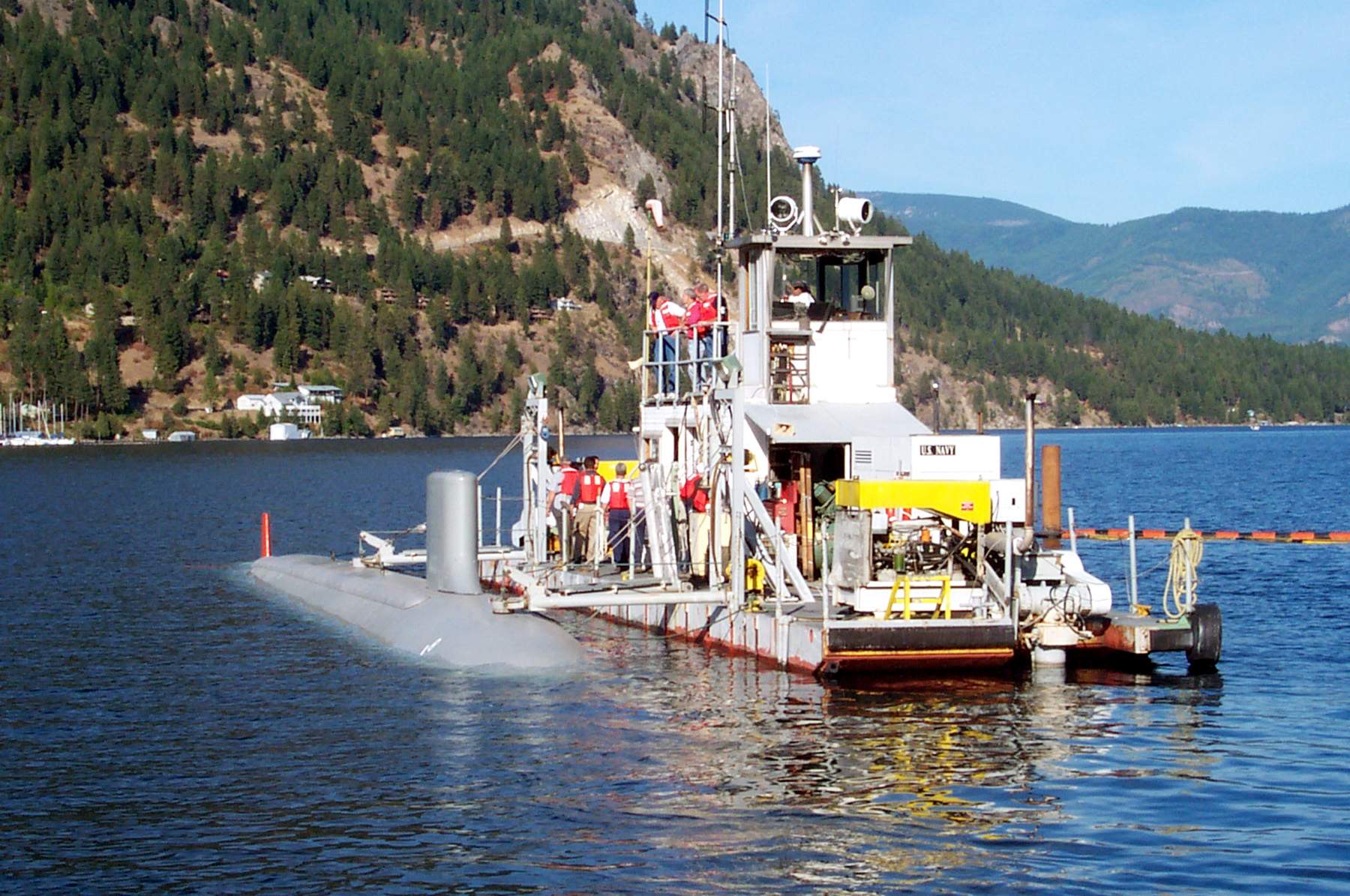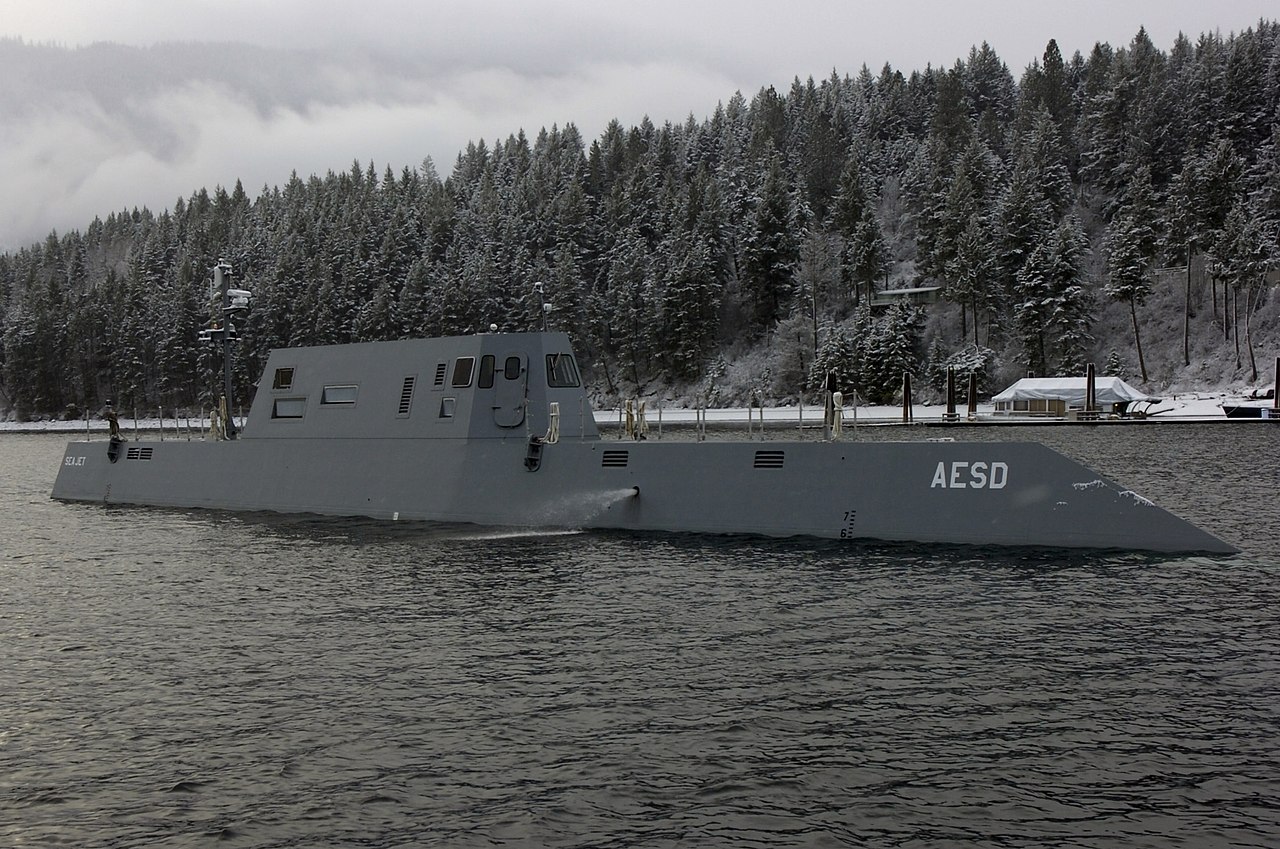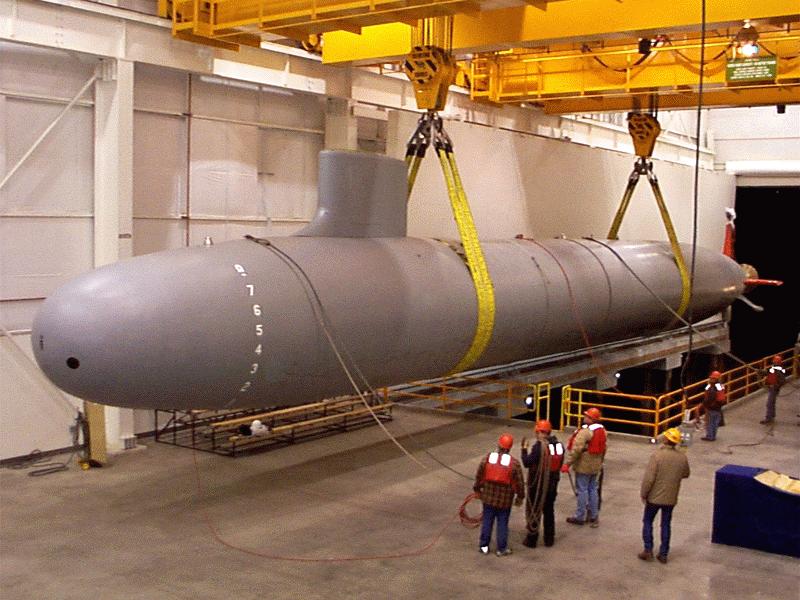The Naval Surface Warfare Center Carderock Division is primarily known for managing the David Taylor Model Basin, but it has other facilities scattered throughout the country. The most interesting of these is the Acoustic Research Detachment located at Bayview, Idaho. The ARD is the world's leading facility for studying surface ship and submarine acoustics, a surprising thing to find several hundred miles inland. But Lake Pend Oreille,1 deep in the mountains of the Idaho panhandle, is the perfect place for such studies. It's over a thousand feet deep, very cold2 and very calm thanks to its isolation and the mild weather of the region, all factors that contribute to a low level of background noise.3

LSV-2 Cutthroat alongside the support tug
Bayview's most impressive systems are a trio of large-scale ship models, two submerged and one surfaced, each about a quarter of the size of the vessels they represent. The submarines, LSV-1 Kokanee and LSV-2 Cutthroat, represent the Seawolf and Virginia class submarines respectively, and are capable of autonomous operations, removing the need for noise-inducing tethers as the vessels pass the hydrophone arrays the Navy has placed in the southern end of the lake. Cutthroat, at 110' long, is the largest unmanned submarine on the planet, and her electric motor is capable of delivering 6000 horsepower. The surface ship model, formally the Advanced Electric Ship Demonstrator but more often known as the Sea Jet, is a scale version of the Zumwalt. All three vessels are primarily intended for development of quieter propulsion systems for submarines and surface ships, although they are also used for flow noise studies, handling tests, and investigations into other aspects of the signature.

The Advanced Electric Ship Demonstrator
But while large-scale model tests are undoubtedly useful, they aren't the right tool to answer all of the questions the Navy would like to investigate. For hydroacoustic issues relating to the bow of the submarine, the Buoyant Vehicle Test Range is used. A buoyant, unpowered model is winched down to the bottom of the lake, then released to rise to the surface past an array of sensors. The flow noise past the model can be measured with no interference from any propulsion system, and the model itself is programmed to turn towards the horizontal as it nears the surface. Another range is the Intermediate Scale Measuring System (ISMS), is a thousand-foot array of hydrophones that provides the capability to investigate the response of structural models to both passive and active sonars. Other sites investigate subjects ranging from radiated (machinery) noise to the performance of towed array sonars against calibrated sources and the capabilities of new active sonars.

Cutthroat being hoisted for modifications
By allowing experiments to be carried out in a controlled environment instead of on the open sea, the ARD and facilities like it have saved the Navy billions of dollars in the eternal war for undersea stealth.
1 Pronounced more or less like "Pond Array". This is apparently the French pronunciation, which translates as "hanging ear". ⇑
2 Below 100 feet, the water is a constant 39.5°F. I've been to Farragut State Park on Pend Oreille several times, and even the shallower parts of the lake in August are very, very cold. ⇑
3 During the summer, tests are only conducted at night, due to the background noise from recreational boaters. ⇑

Comments
I can't tell if this is a dry joke or not, but assuming you're serious: Oreille is French for "ear" and that's just how you pronounce it in French.
So the explanation is "French"
It was a joke. Yes, it's French, and I knew that, but I've also heard people (not from the Northwest) pronounce it as it's spelled.
Re: "pond array": that's really the French pronunciation, modulo accent. (Apparently means "hanging ear", still somewhat relevant to the facility)
That's what I get for not refreshing an hours-old tab before posting a comment...
Really interesting post Bean.
You should follow this up with one on the Naval Training Station.
That's a pretty cool facility they have there in Lake Panda Reel :P
Now I know what my wife is talking about when she talks about LPO.